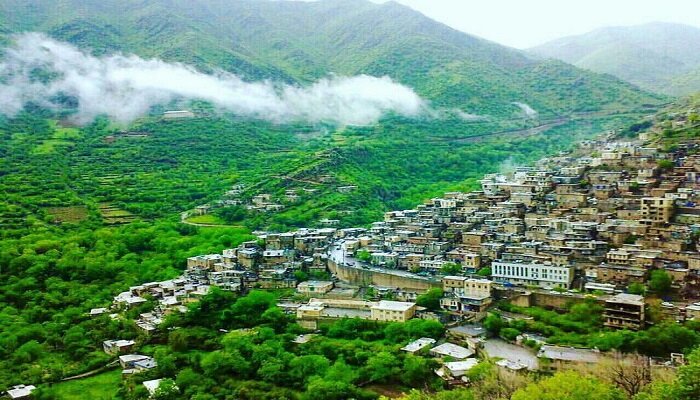Uramanat’s historical bazaar undergoes restoration

TEHRAN –The historical bazaar of Nodesheh, a city located in the UNESCO-designated Uramanat region in western Iran, has undergone some rehabilitation works, the director of the World Heritage site has said.
A budget of 3.5 billion rials ($12,000) has been allocated to this phase of the project, CHTN quoted Pouya Talebnia as saying on Sunday.
The project involves lightening the rooftop as well as repairing the sabat (an arched structure built between the opposite buildings on both sides of a narrow street), the official added.
UNESCO standards and rules are being followed in restoring the historical bazaar, which is one of the region’s unique structures, he noted.
In the Iranian culture, bazaars have been traditional public spaces in the Iranian cities with great contributions to commercial activities in urban life meanwhile their extended activities can be traced to social, cultural, political, and religious roles.
Most mazes and passages offer certain commodities such as carpets, metalwork, toys, clothing, jewelry, kitchen appliances, traditional spices, herbal remedies, and natural perfumes. One can also bump into colorful grocery stores, bookbinders, blacksmiths, tinsmiths, coppersmiths, tobacconists, tailors, flag sellers, broadcloth sellers, carpenters, shoemakers, and knife-makers.
From another point of view, bazaars are also synonyms for foods, with their unmissable colorful stalls of vegetables, herbs, and spices. Yet, most of these ingredients might be mysterious to a foreign eye.
Stretched on the slopes of Sarvabad county at the heart of the Zagros Mountains, and shared between the provinces of Kordestan and Kermanshah in western Iran, the Uramanat cultural landscape embraces hundreds of villages, 106,000 hectares of land, and 303,000 hectares of surrounding properties.
It boasts dense and step-like rows of houses in a way that the roof of each house forms the yard of the upper one, a feature that adds to its charm and attractiveness.
Archaeological findings dating back about 40,000 years, caves and rock shelters, ancient paths and ways along the valleys, motifs and inscriptions, cemeteries, mounds, castles, settlements, and other historical evidence attest to the continuity of life in the Uramanat region from the Paleolithic to the present time.
According to the UN body, Uramanat is an exceptional testimony to a cultural tradition of the semi-nomadic agropastoral way of life of the Hawrami people, a Kurdish tribe that has resided in the Zagros Mountains for millennia.
This outstanding cultural tradition is manifested in the ancestral practices of transhumance, the mode of seasonal living in Havars, steep-slope terraced agriculture, soil and water management, traditional knowledge for planning and constructing steeply terraced villages, and rich diversity of intangible heritage, all reflecting a harmonious co-existence with nature.
ABU/MG
Leave a Comment